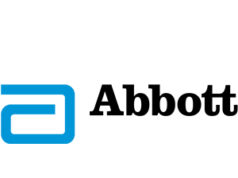
Results of the LIFE-BTK randomised controlled trial have just been presented at TCT 2023 (23–26 October, San Francisco, USA). The data show that, in patients with chronic limb-threatening ischaemia (CLTI) due to infrapopliteal artery disease, an everolimus-eluting resorbable scaffold was superior to angioplasty at one year with respect to the primary efficacy endpoint.
Ramon L Varcoe (Prince of Wales Hospital and University of New South Wales, Randwick, Australia) shared this and other key findings at TCT on behalf of co-principal investigators Brian G DeRubertis (New York Presbyterian–Weill Cornell Medical Center, New York, USA) and Sahil A Parikh (Columbia University Irving Medical Center, New York, USA). The trial results were simultaneously published in the New England Journal of Medicine (NEJM).
Parikh shares his thoughts on the significance of these results with this newspaper: “This trial is the first of its kind to demonstrate superiority of a technology for below-the-knee [BTK] intervention along a relatively long time point for this patient population.” He describes the effects of the technology as durable and notes they are “continuing to diverge” at the 12-month time point. “It is a highly clinically significant result”.
Peter Schneider (University of California San Francisco, San Francisco, USA) provides some context, noting that LIFE-BTK follows multiple failed trials in the BTK segment. “The key thing I think is that we do not have the tools we need to treat BTK disease. Yes, catheter-based treatments for limb salvage are quite good, they performed well in both the BEST-CLI and BASIL-2 trials, but it is still somewhat limited in terms of the number of options we have,” he says. “We have had a number of failed trials below the knee—three failed [drug-coated balloon] trials and one failed drug-eluting stent trial—and the fact that we now have a successful trial is really I would say wind in the sails of this whole effort to try to improve the tools and the approaches that we have for BTK disease.”
In this multicentre, randomised controlled trial, 261 patients with CLTI and infrapopliteal artery disease were randomly assigned in a 2:1 ratio to receive an everolimus-eluting resorbable scaffold (Esprit BTK; Abbott Vascular) or angioplasty.
The primary efficacy endpoint was freedom from amputation above the ankle of the target limb, occlusion of the target vessel, clinically driven revascularisation of the target lesion, and binary restenosis of the target lesion at one year. The primary safety endpoint was freedom from major adverse limb events at six months and perioperative death.
The authors report in NEJM that the primary efficacy endpoint was observed—by which they mean no events occurred—in 135 of 173 patients in the scaffold group and 48 of 88 patients in the angioplasty group (Kaplan–Meier estimate, 74% vs. 44%; absolute difference, 30 percentage points; 95% confidence interval [CI], 15 to 46; p<0.001 for superiority). This is “a highly statistically significant result,” Parikh remarks in conversation with this newspaper.
Parikh adds that the primary safety endpoint was “statistically indistinguishable between the two groups”. Writing in NEJM, the investigators elaborate that this endpoint was observed in 165 of 170 patients in the scaffold group and 90 of 90 patients in the angioplasty group (absolute difference, -3 percentage points; 95% CI, -6 to 0).
Finally, the investigators relay in their NEJM report that serious adverse events related to the index procedure occurred in 2% of the patients in the scaffold group and 3% of those in the angioplasty group.
Lessons learned
Parikh, an interventional cardiologist, notes that resorbable scaffold technology has “significantly improved” since the early iterations used in the coronary arteries. He expresses his hope for use of this technology in the peripheral vessels: “I would like to make clear that this is a new iteration of this technology,” he says. “The scaffold thickness is substantially less, it is in fact comparable to the contemporary drug-eluting coronary stents that we now use, with a thickness of less than 100 microns.”
Parikh adds that the lesion lengths that can be treated now are much longer. “In fact, in this trial, the lesions that were treated were up to 17cm, with overlapping scaffolds,” he shares.
According to Parikh, the success of current resorbable scaffold technology is a testament to lessons learned from past versions. “It is a similar technology to predecessors, but has benefitted from the experience that we have learned from other trials, and what we have learned is that fastidious implantation technique, adequate sizing, and appropriate pharmacotherapy are really the mainstays of treatment, and they are probably critically important to all vascular interventions, but specifically using a drug-eluting resorbable scaffold.”
He urges caution when comparing use of resorbable scaffolds in different vessels, although notes that “in this specific instance, the technology has proven itself to be superior in a randomised controlled clinical trial”.
Based on the positive findings from LIFE-KTK, Parikh is hopeful for the future of treatment in patients with CLTI due to infrainguinal disease: “We are extremely excited about the prospect of this technology being part of our armamentarium.”
On whether the results will change practice, Schneider opines that “this is a tool that all of us are going to want to have on our shelf”. However, he advises that interventionalists “keep in mind that a randomised controlled trial […] is not the same as an everyday algorithm of when to use and in which patients and in which situation”. The next step, according to Schneider, should be to develop that algorithm.
Questions remain, he says, including ‘is this something we are going to be using every day, or something we are going to be using once in a while in specific situations?’ and “that is the part that I think we need to go forward and figure out”.













